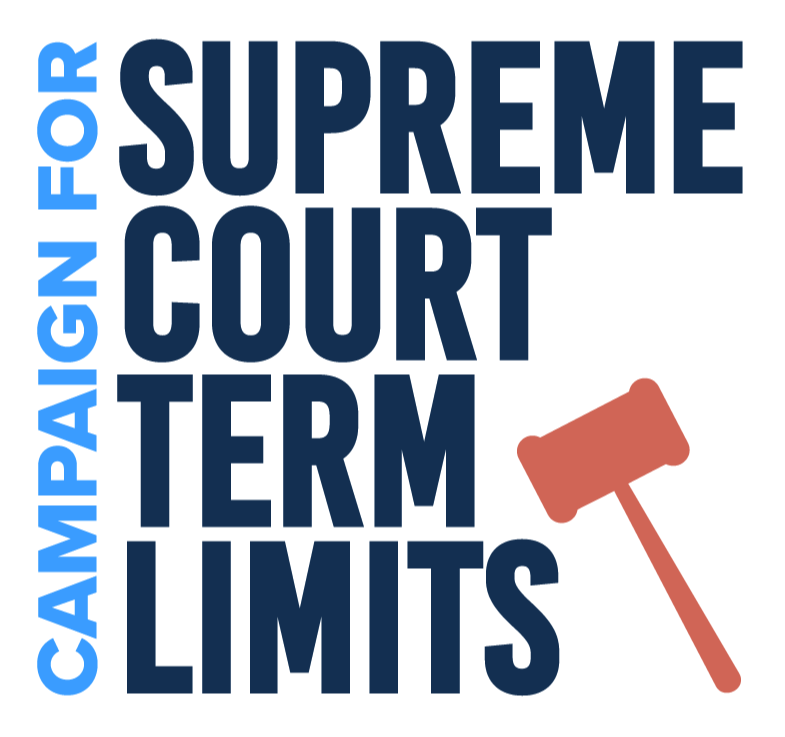First-Ever Measure to End Life Tenure on the Supreme Court Via Statute, Not Amendment, Introduced in Congress
Bill mandates 18-year terms for future justices, permits two appointments per presidential term
 Fix the Court is applauding Reps. Ro Khanna, Don Beyer and Joe Kennedy III for introducing the first-ever measure to end life tenure on the Supreme Court via statute, not amendment. If enacted, the Supreme Court Term Limits and Regular Appointments Act, would limit future justices to a nonrenewable 18-year term, staggered so that two would be appointed each presidential term.
Fix the Court is applauding Reps. Ro Khanna, Don Beyer and Joe Kennedy III for introducing the first-ever measure to end life tenure on the Supreme Court via statute, not amendment. If enacted, the Supreme Court Term Limits and Regular Appointments Act, would limit future justices to a nonrenewable 18-year term, staggered so that two would be appointed each presidential term.
Fix the Court endorses the bill.
The bill would also create the status of “senior justice” for current retired justices and for future justices who complete their 18-year terms at the high court. This would be similar to the senior status that exists for federal judges on lower courts and would permit them to rejoin the high court should it find itself at less than full strength due to an unexpected vacancy.
The current eight justices would be exempt from term limits section and could continue to serve as long as they want.
“For the first time in U.S. history, statutory language has been introduced to accomplish what court-watchers have been saying for ages: on Supreme Court appointments, we must do better,” FTC executive director Gabe Roth said. “A standard appointment process, where future justices serve for a reasonable amount of time, is that better way – and one the majority of the country already supports.”
Roth added: “Congress has through the years used its constitutional authority to reform the roles and responsibilities of our courts, so lawmakers are well within their rights to reconsider the role of our nation’s top jurists as a means to restore confidence in the high court and in the rule of law. Regular appointments can reduce the contentiousness of nominations and result in a bench that’s still independent and countermajoritarian but no longer antediluvian.”
Proposals to limit tenure at the Supreme Court are as old as the republic itself. The first term limits amendment was introduced in 1807 (p. 13), though the modern movement to limit SCOTUS tenure can be traced to the last three-plus decades, as both the court’s power and the contentiousness of its confirmation process have increased precipitously.
Law Prof. Philip Oliver first proposed 18-year terms as a constitutional amendment in 1986, and the idea gained steam in 2005, when Profs. Paul Carrington and Roger Cramton drafted a statute, the “Supreme Court Renewal Act,” which, like this bill, would add a new justice every other year and limit new justices’ terms to 18 years.
One shortcoming, though, was implementation; their language stated that “no [biennial] appointments shall be made […] before the Congress that begins after the last of the present Justices so leaves the Court” – i.e., not until a Justice Kagan, Gorsuch or Kavanaugh retires in 25-30 years. The Khanna-Beyer-Kennedy bill implements term limits upon enactment, meaning that for a time it’s likely there would be more than nine justices on the court, all of whom would consider every case and petition.
“This approach,” Roth noted, “is preferable to waiting for some theoretically ‘perfect’ time in the future to implement term limits. The problems created by frenzied confirmations and unaccountable justices only increase with each passing year.”
It is true that legal scholars still grapple with the constitutionality of the statute, with the academy remaining split. FTC notes that throughout history, Congress has written laws – judiciary acts – based on contemporary needs and understandings of the Constitution that have impacted how the Supreme Court, and all courts, do their jobs. In 1891 and 1925, Congress increased the justices’ discretion over what cases they’d hear; in 1937, retired justices were formally permitted to sit on lower courts after retirement; in 1954, senior status was codified, permitting judges over 65 to continue part-time if they so desired.
With “good behaviour” evolving today into all but a mandate to serve unchecked for decades on end, supporters of term limits are saying now is the time to return to the original understanding of the role of justice (e.g., justices from 1789-1970 served 16 years on average; now it’s 28 years) and establish reasonable limits that would in no way interfere with judicial independence.
Khanna has voiced his approval of SCOTUS terms several times over the years, citing the support of his former law school professor, Bruce Ackerman, and Beyer has backed the policy since at least since 2014, when it was one of his “8 Ideas for the 8th [District].” Kennedy mentioned his support for the policy during a senatorial debate in February.
Earlier this week, the Washington Post and Boston Globe editorial boards endorsed 18-year terms, and the L.A. Times board did in April.
Fix the Court was founded in 2014 and began advocating for a term limits statute in 2015. Its Campaign for Supreme Court Term Limits launched last July.